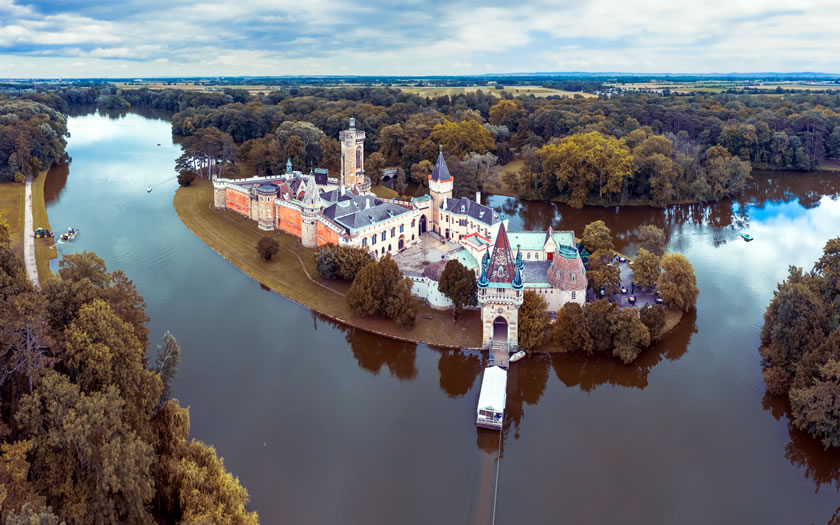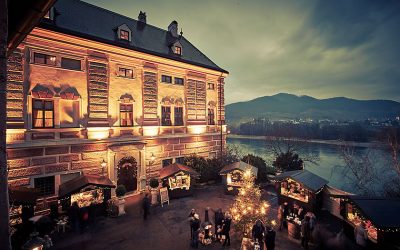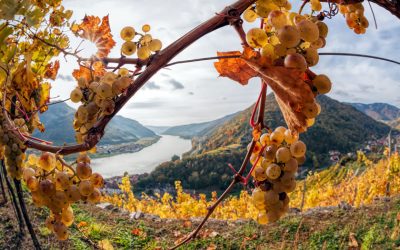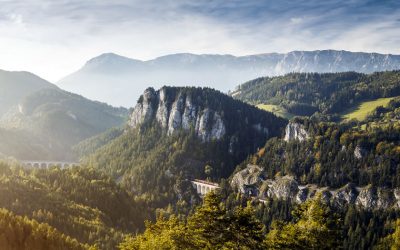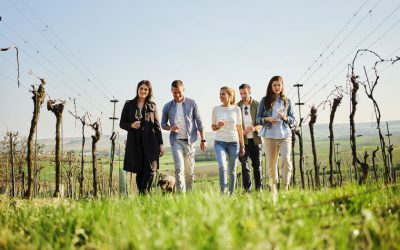The Laxenburg castles and the surrounding parklands in the countryside of Lower Austria to the south of Vienna were a former summer residence of the ruling Habsburg dynasty .
The Laxenburg castle complex – there are three different ‘castles’ – and the formal gardens were originally a hunting reserve which came into the Habsburg family’s possession in the 14th century.
Altes Schloss (‘Old Castle’)
The Alte Schloss is, as its name suggests, the oldest of the three buildings in the castle park. It dates from the 14th century and was used as a hunting lodge by Duke Albert III, who died in the Altes Schloss in 1395 while preparing a military campaign.
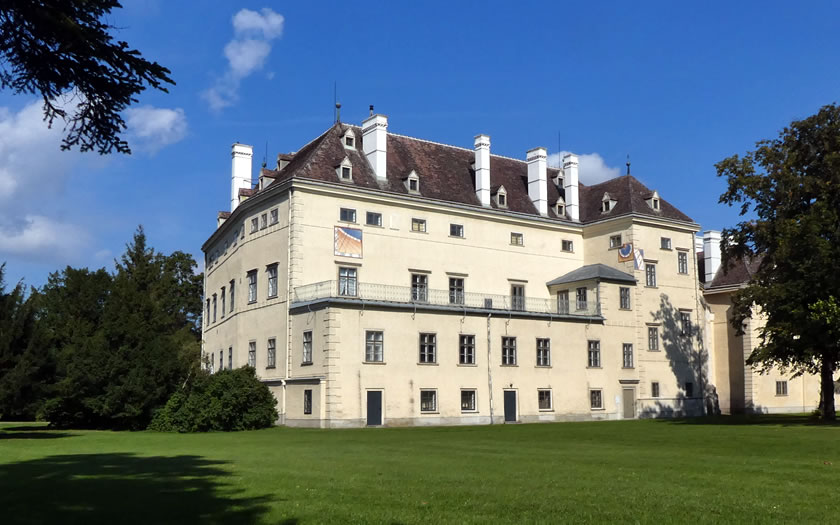
© Austria Direct
The castle was damaged during the war with the Turks and remodelled in the Baroque style of the 17th century with the former defensive moat filled in. The Altes Schloss was renovated after damage in World War II and now houses part of the Austrian Film Archive.
Blauer Hof (‘New Castle’)
The extensive buildings of the Blauer Hof stand at the entrance to the castle gardens at the edge of the town of Laxenburg.
The ‘New Castle’ is a very different style of architecture and came into the possession of the Empress Maria Theresa in the mid-18th century. She ordered her court architect to implement major changes and extensions to the building in the Rococo style of the period.
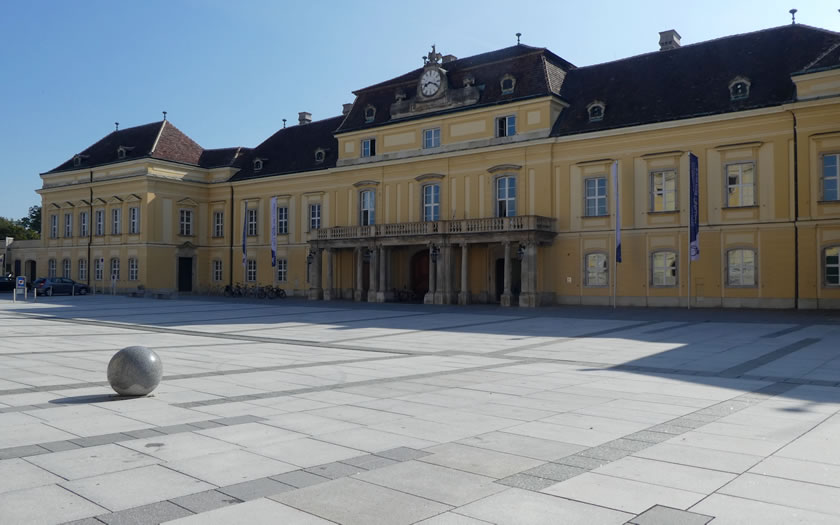
© Austria Direct
Of the three castles, this was the one most used by the Imperial family as a residence and, in later years, the Emperor Franz Josef and his renowned wife ‘Sisi’ spent their honeymoon here, with two of their children born at Laxenburg.
The Blauer Hof (named for a family which previously owned the building and not for any relation to the colour blue) is now used as a conference and seminar centre and by a global research institute.
Franzensburg Castle
Franzensburg Castle is the youngest of the three castles in the gardens and probably the best-known (and most photographed!). It is located at the heart of the park and surrounded by a lake.
It was built at the beginning of the 19th century in the ‘romantic Gothic’ style which had become popular in that era. Rulers were building castle-style residences which harked back to Germanic legends of the Middle Ages.
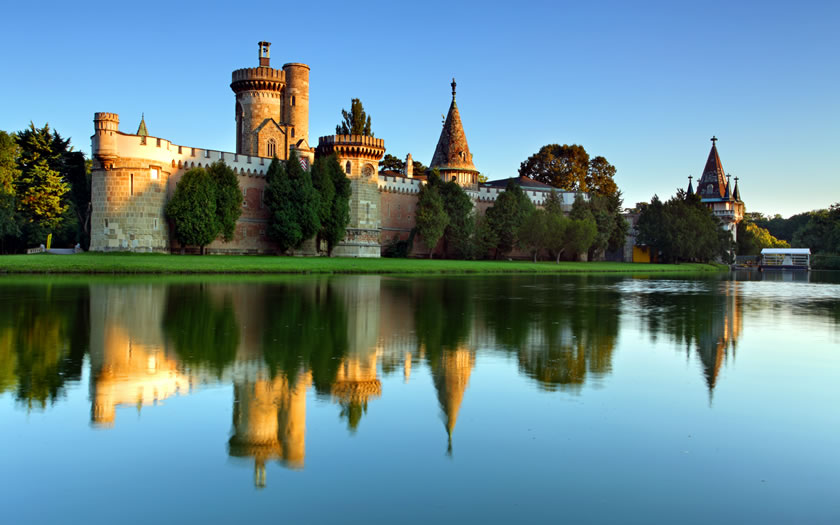
Franzensburg Castle was never designed as a residence, but instead was meant to display some of the Imperial treasures collected over the centuries. Many of the interiors and furnishings that can be seen in the castle were removed from their historic homes and reinstalled here.
Nowadays the castle interior can be visited on regular guided tours. The castle itself can either be reached on a path through the gardens which leads to a short ferry ride across the lake or on a lengthier trail which approaches it from the south.
Laxenburg Castle Gardens
Those who wish to explore the castle gardens will find plenty of places of interest dotted around the formal park area. The English-style landscaping was carried out towards the end of the 18th century and includes some smaller lakes and ponds as well as temples and grottoes.
The parkland covers 250 hectares with the artificial lake where the Franzensburg is located accounting for 25 hectares.
Getting to Laxenburg
A visit to the Laxenburg Castle Complex is a popular day trip from Vienna. Both rail and bus connections to Laxenburg are available from the main Vienna train station. Those using their own transport will find adequate parking in various car parks on the edge of the gardens.
More information: www.schloss-laxenburg.at

